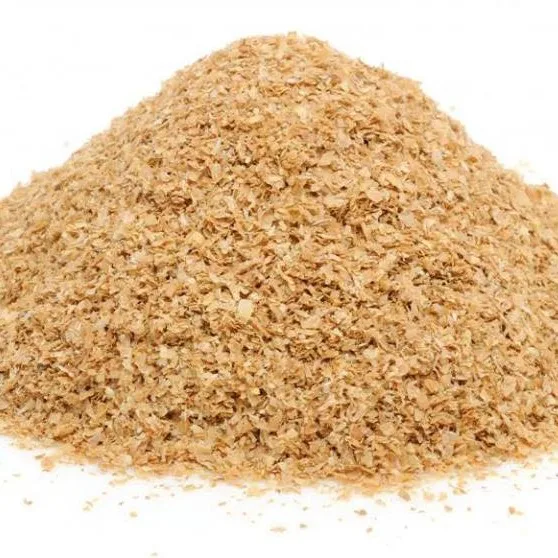Appearance
Tanned to dark brown flakes
Common Names
Wheat Bran
Packaging
50 kg PP Bag
Wheat (Triticum aestivum L.) milling yields a high protein by-product that is suitable for broad classes of livestock and animal. Wheat bran can be served to cattle, poultry, sheep, pigs, and horses. Wheat bran is bulky, making it useful to lighten the feed mixture. Wheat bran can also be fused into the form of mashes.
Because of the high fiber level and its laxative effect, wheat bran is better not to be fed to young livestock. Below is nutrition value of the product
| Parameter | Value |
| Dry Matter | 87 - 88% as fed |
| Crude Protein | 14 - 17% DM |
| Crude Fiber | 6 - 10% DM |
| Crude Fat | 4% DM |
| NDF | 45 - 46% DM |
| ADF | 13.5% DM |
| Lignin | 4% DM |
| Ash | 5 - 6% DM |
| Starch | 22 - 23% DM |
| Sugars | 7 - 8% DM |
| Gross Energy | 18.9 MJ/kg |
Wheat bran is produced as a side product of milling of wheat into white flour. Wheat bran was sifted, washed, and dried at 180°C–200°C for 30–40 min and then ground. Wheat is usually milled by roller milling, which delivers multiple product streams that the miller can combine into flour or bran fractions. Thus, the composition of wheat bran from different mills varies significantly.
Wheat (Triticum aestivum L.) milling yields a high protein by-product that is suitable for broad classes of livestock and animal. Wheat bran can be served to cattle, poultry, sheep, pigs, and horses. Wheat bran is bulky, making it useful to lighten the feed mixture. Wheat bran can also be fused into the form of mashes.
Because of the high fiber level and its laxative effect, wheat bran is better not to be fed to young livestock. Below is nutrition value of the product
| Parameter | Value |
| Dry Matter | 87 - 88% as fed |
| Crude Protein | 14 - 17% DM |
| Crude Fiber | 6 - 10% DM |
| Crude Fat | 4% DM |
| NDF | 45 - 46% DM |
| ADF | 13.5% DM |
| Lignin | 4% DM |
| Ash | 5 - 6% DM |
| Starch | 22 - 23% DM |
| Sugars | 7 - 8% DM |
| Gross Energy | 18.9 MJ/kg |
Wheat bran is produced as a side product of milling of wheat into white flour. Wheat bran was sifted, washed, and dried at 180°C–200°C for 30–40 min and then ground. Wheat is usually milled by roller milling, which delivers multiple product streams that the miller can combine into flour or bran fractions. Thus, the composition of wheat bran from different mills varies significantly.
